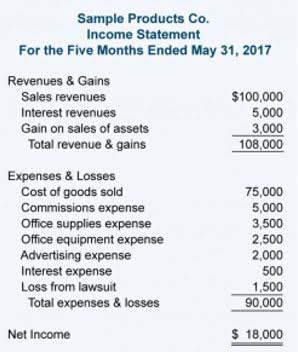
High retained earnings indicate a company’s ability to reinvest in itself, which shows stability and a long-term focus on growth. Placing funds into business development enables companies to maintain market leadership through time. Start with the previous year’s balance sheet to get the company’s beginning retained earnings. It shows the accumulated profits that the company has retained over time. Retained earnings belong to the shareholder equity section of the balance sheet.
- Retained earnings are the lifeblood of a company’s financial growth and sustainability.
- To simplify your retained earnings calculation, opt for user-friendly accounting software with comprehensive reporting capabilities.
- As always, we must explore and investigate every company we buy and do our due diligence to ensure we buy an outstanding business.
- The key to addressing negative retained earnings is to focus on long-term sustainability and profitability.
- The remaining amount is retained and reinvested in the business to support growth.
- The SmartBiz® Small Business Blog and other related communications from SmartBiz Loans® are intended to provide general information on relevant topics for managing small businesses.
- In Snapchat’s case, they tell me the company struggles to grow its revenue enough to overcome its expenses as its negative bottom line continues.
Retained Earnings: Everything You Need to Know for Your Small Business

Analysts and investors scrutinize this financial metric to assess the firm’s financial stability and growth potential. Negative retained earnings can be a concerning issue for a company, as it indicates that the company has consistently reported net losses over time. This can lead to a decrease in shareholder confidence and potentially make it more difficult for the company to obtain financing in the future. In order to address negative retained earnings, the company will need to take steps to improve its financial performance and generate profits.
AccountingTools
Under accounting standards like GAAP or IFRS, companies must periodically assess asset values and recognize impairments when necessary. These adjustments, though non-cash, can materially affect the contribution margin retained earnings balance. Retained earnings are the profits (net income) that a business has earned at a certain point in time, less any dividends paid out to shareholders.

How Do Shareholder Distributions Affect Retained Earnings?
When a company generates net income, it is typically recorded as a credit to the retained earnings account, increasing the balance. In contrast, when a company suffers a net loss or pays dividends, the retained earnings account is debited, reducing the balance. When a company pays dividends to its shareholders, it reduces its retained earnings by the amount of dividends paid. It reconciles the beginning balance of net income or loss for the period, negative retained earnings subtracts dividends paid to shareholders and provides the ending balance of retained earnings. In some countries, if the equity turns to a level below the requirement, shareholders or owners are normally required to inject more funds. Some very public, large companies have negative retained earnings, such as, most recently, Starbucks.


For management, this financial signal might prompt a reevaluation of their strategy and performance, possibly leading to leadership changes or shifts in business direction. Profits generally refer to the money a company earns after subtracting all costs and expenses from its total revenues. To simplify your retained earnings calculation, opt for user-friendly accounting software with comprehensive reporting capabilities. There are plenty of options out there, including QuickBooks, Xero, and FreshBooks. Shareholders, analysts and potential investors use the https://www.bookstime.com/ statement to assess a company’s profitability and dividend payout potential. The table provides a snapshot of the retained earnings of select companies over a four-year period, highlighting the magnitude of negative retained earnings in each fiscal year.


Leave A Reply